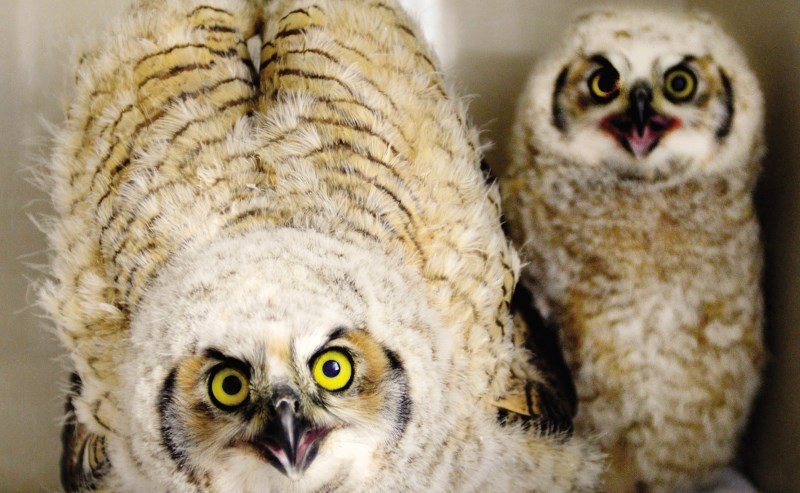Local wildlife rehab centre, the Alberta Institute for Wildlife Conservation (AIWC), located in Madden, has reported that its intake numbers are already up this spring season in comparison to last year.
As of May 12, the centre has admitted 231 animals so far this year, and the ‘baby boom’ has just begun.
According to Holly Duvall, executive director of AIWC, this is an increase of 73 intakes from this time last year.
“We just got our first call for a baby bird rescue,” said Skye Burgan, an AIWC biologist. “We really want people to be sure they are reading the scenario properly and to avoid ‘kidnapping’…it’s not necessarily about jumping up to collect that baby animal right away. Watch for the parents, observe the situation…”
Adult hares, for example, leave their offspring for the bulk of the day — returning at dawn and dusk to feed. Often, people will bring baby rabbits in to the centre after mistakenly assuming the rabbits were orphaned.
New last week to the centre include a smattering of ducklings and goslings and three infant Great Horned Owls (‘owlets’).
Burgan said two of the owlets were brought in by a concerned individual, who found the parents dead (from electrocution). He had been observing the nest, located on his property, and wound up phoning AIWC to rescue the owlets.
Burgan said it is not uncommon to find animals that have met an untimely demise from an encounter with an electrical wire, as well as from ingesting pesticides or feeding on carcasses that have been shot or poisoned and left out of rural properties. Also in AIWC’s current care include four bats, a crow, a morning dove, two sharp-shinned hawks, a cedar waxwing and two Swainson’s hawks. While Burgan said it was a slow start to the season, the busyness has kicked in and intake is rapidly rising.
Receiving zero funds from the province, AIWC is solely reliant on donations from the public. Its current major fundraiser is to purchase the land its rehab facility has been situated on since their 1993 beginnings.
Their goal is to fundraiser a total of $750,000 ($200,000 donated by an anonymous donor) to purchase the 9.69 acres the facility is built on.
This goal is in addition to their annual operations needs, which allow them to help over 1,600 animals each year; visit aiwcforeverhome.causevox.com to donate or learn more.
For some 22 years, the non-profit society and registered charity has been taking in native injured, orphaned and contaminated animals — from baby birds to moose.
An estimated 95 per cent of its intake relates to human interference/activities.
The most common causes of injury include window striking, vehicle collision, electrocution (contact with power lines), barbed wires, fishing line entanglement and ingestion, domestic animal attacks and exposure to toxins (including pesticides).
Last year, 1,637 animals were brought in to the centre; more than 5,000 wildlife calls were fielded; and public education presentations were made to more than 3,600 people.
Volunteer recruitment is done in January of each year.
The centre boasts a volunteer army of over 100 individuals, who tirelessly donate their time to rescue, driving, education, ambassador programs, construction and working around the centre cleaning, feeding and caring for the animals that are in AIWC’s care.



